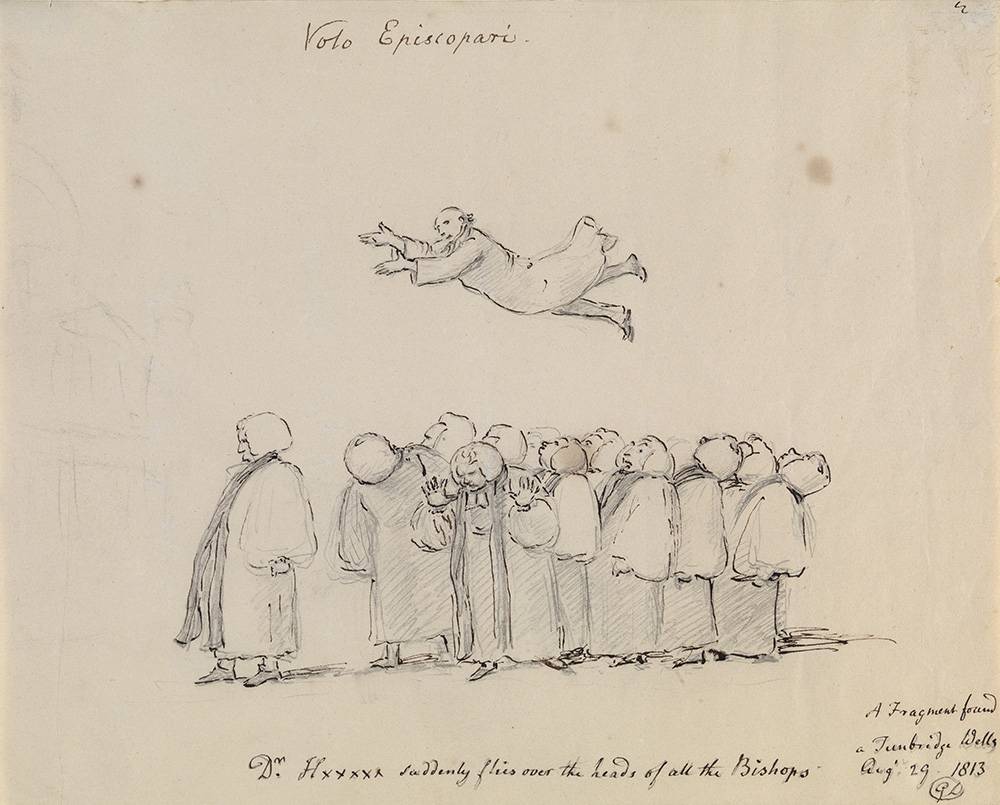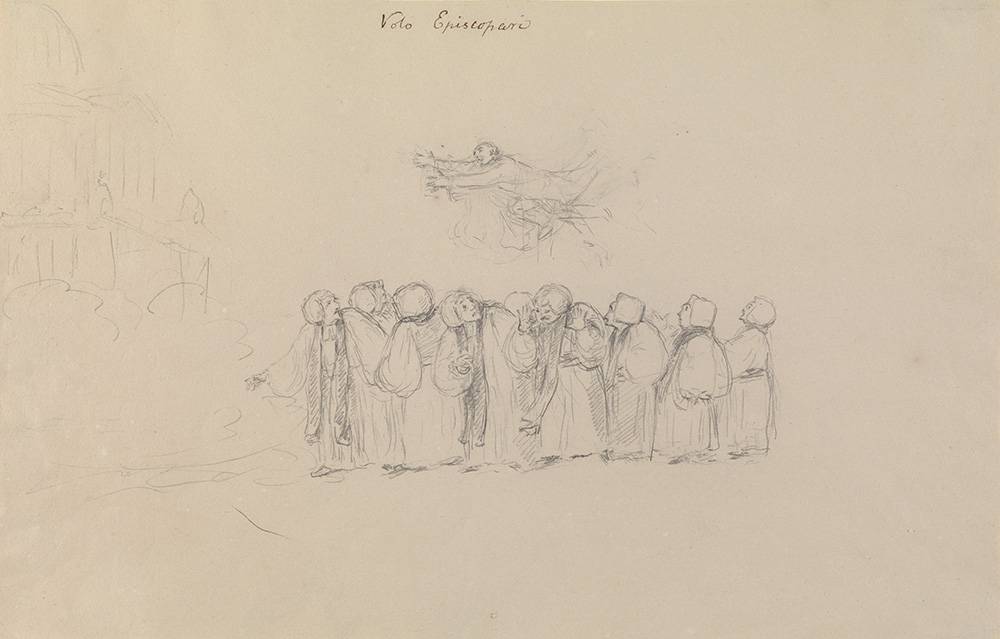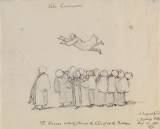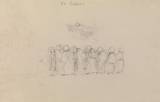These two sheets show George Dance working out the composition of one of his satirical cartoons in pencil and then working it up in a final image in ink. Captioned ‘Dr Hxxxxx suddenly flies over the heads of the bishops’ and further captioned ‘Volo Episcopari’, the cartoon was conceived as a gentle satire on the elevation of William Howley from professor of Divinity at Oxford and Canon of Christ Church to Bishop of London in 1813. Dance’s gentle humour pokes fun at Howley’s ambition, by substituting the traditional Latin injunction ‘Nolo Episcopari’ (I am unwilling to accept the office of Bishop), which is repeated twice during consecration with ‘volo Episcopari’ (I want the office of Bishop). Dance shows the grasping Howley flying over the heads of a gaggle of bemused bishops. In the drawing Dance shows Howley flying towards St Paul’s, the seat of the Bishop of London.
George Dance, the son of a successful architect, also George, and brother to the painter Nathaniel, was himself an accomplished and celebrated architect. A founder member of the Royal Academy, Dance was also a fluent and prolific draughtsman. Dance never let architecture dominate his life. He was a man of wide-ranging interests, and in later years he gained greater satisfaction from arts other than architecture. He possessed considerable musical skill as an instrumentalist and composer: Haydn became a valued friend. His interest in drawing also grew: his distinctive and highly finished pencil profile portraits constituted a vivid gallery of Regency London's artistic establishment of the day, and etchings after them by William Daniell were published in 1804–14. Simultaneously, Dance delighted in producing humorous cartoons and caricatures and a sizeable body of his amusing drawings survives.





